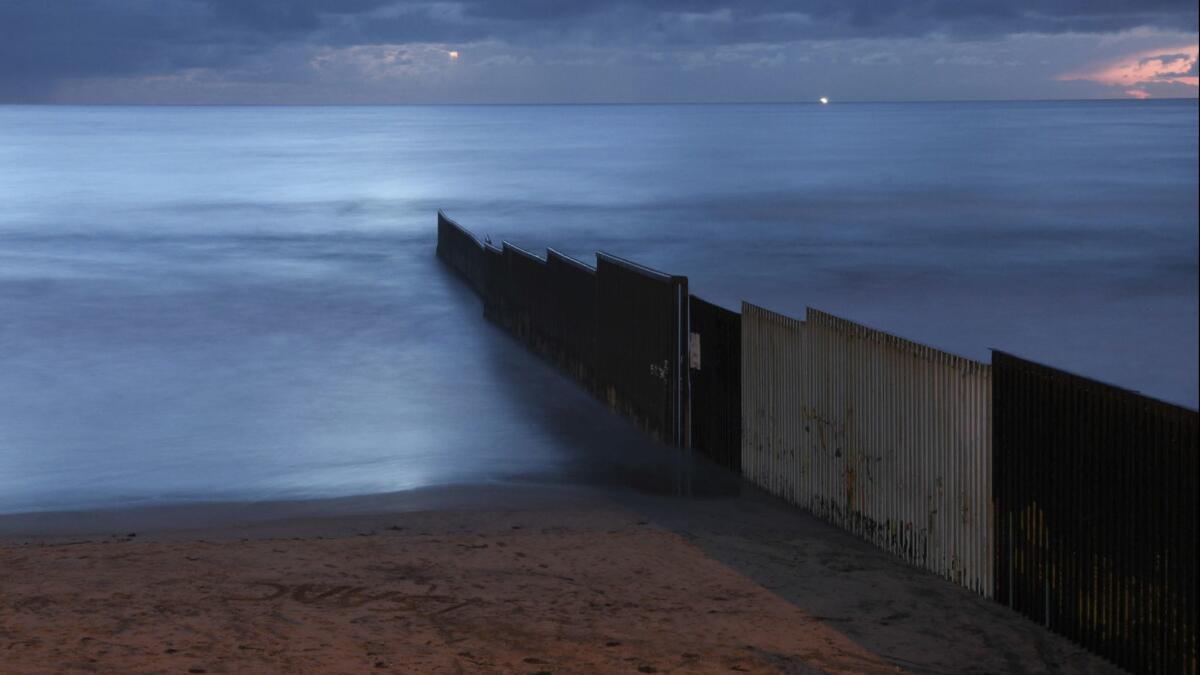Editorial: Has Trump finally realized that to reduce immigration, the U.S. should fight the conditions that fuel it?

The recent announcement by the U.S. and Mexican governments that they will work together to invest billions of dollars in southern Mexico and the northern triangle of Central American countries was welcome. It suggests that the Trump administration might finally be recognizing that improving living conditions in that region is key to reducing illegal migration from Guatemala, Honduras and El Salvador.
Until now, Trump has sought sharp cuts in foreign aid — and not just to Central America — though Congress has restored most of the spending. And as so-called caravans of migrants moved northward, Trump, in a fit of pique, said he would cut aid to countries that failed to stop the travelers, a move that threatened to make dire local conditions even worse. If the aid package announced Tuesday stands as a reversal of that worldview, we welcome it.
The Trump administration might finally be recognizing that improving living conditions in that region is key to reducing illegal migration.
Under the part of the plan announced Tuesday, the State Department would spend $5.8 billion — though much of that had been approved under the Obama administration — on economic development aimed at improving Central American living conditions and shoring up government institutions while reducing the power of violent street gangs. About $2 billion of the total would come from the Overseas Private Investment Corp., a U.S. government financial development agency. The funds, including loans, would go to projects based on their “commercial viability,” which raises questions about how much aid would actually arrive. Still, it’s a positive (if small) move by an administration that questions the efficacy of foreign aid. And while there have been problems with corruption within those countries, experts say previous U.S. investments and aid have improved conditions, though clearly not sufficiently to keep people from moving north.
The package announced Tuesday follows a pledge by Mexico earlier this month to spend $30 billion over five years to shore up economic development in the southern part of that country, in part to try to stem the flow of migrants from the northern triangle through Mexico to the U.S. The government has yet to explain how such development would stop people from leaving Central America.
This is the right direction to move in. Alleviating the conditions that compel the desperate to flee their homes and seek safety in another country can both reduce the dangerous travel migrants engage in to get here, and serve a humanitarian purpose by improving the lives of people in places where crime, poverty and illness make daily existence dangerous.
Enter the Fray: First takes on the news of the minute from L.A. Times Opinion »
Which bring us to the second development this week. The U.S. and Mexican governments have agreed that non-Mexican migrants — primarily Central Americans — seeking asylum at the U.S.-Mexican border will remain on the Mexican side, with that country providing humanitarian aid and work permits, while their U.S. asylum claims are considered, a process that can take as long as two years.
Yet U.S. asylum laws don’t seem to give the administration the authority to bar asylum seekers from entering the country. Under the law, anyone who shows up at the border and asks for protection must be allowed to make the case that conditions in the home country give them a credible fear that they will be persecuted on the basis of race, religion, nationality or political views, or as a member of a particular social group.
Immigrant rights advocates have decried the plan, arguing that it will force U.S. asylum seekers to live in dangerous border zones, often at the mercy of drug cartels. So far, many of the migrants have been forced to sleep at makeshift refugee camps at sports arenas or along border-city sidewalks. That’s an atrocious way to treat people who are exercising a legal right to petition for help. It’s reasonable to detain asylum seekers long enough to ascertain whether they can mount a credible argument that they face persecution, that they are indeed who they say they are, and that they do not have criminal backgrounds or other baggage that would make them ineligible to live legally in the U.S. But in the process, asylum seekers should be treated humanely and with dignity, and not consigned to dangerous conditions while the U.S. government slowly decides their fate.
Follow the Opinion section on Twitter @latimesopinion or Facebook
More to Read
A cure for the common opinion
Get thought-provoking perspectives with our weekly newsletter.
You may occasionally receive promotional content from the Los Angeles Times.










